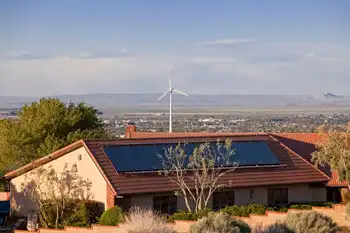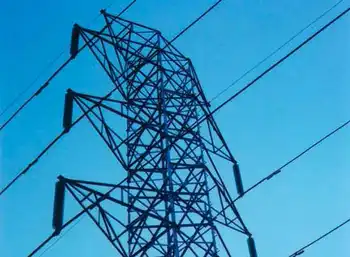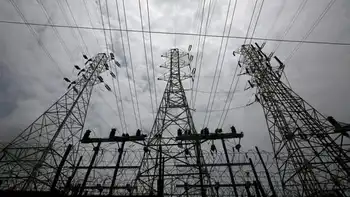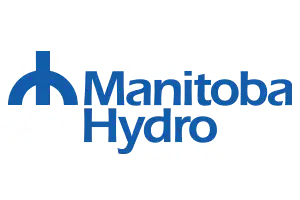- Despite initial broad-based opposition to the Federal Energy Regulatory Commission's call for adoption of a standard market design for the U.S. electric power industry, federal energy commissioners continue to support adoption of a meaningful form of the proposal. Speaking to the American Wind Energy Association's (AWEA) annual conference in May, FERC commissioners William Massey and Nora Mead Brownell said the commission and its chairman, Pat Wood, are determined to resolve regional differences by being flexible, adaptable and understanding of legitimate points of concern.
Massey said that in the wake of the California market meltdown the question is whether people will tolerate poorly structured markets or insist on good markets. "This is an important question because achieving well functioning wholesale markets requires regulatory initiative," he said. "Electricity markets don't fix themselves when they're broken nor do they oversee and monitor themselves. They don't establish or enforce the rules nor do they approve tariffs that govern grid access. These are the responsibilities of regulators." Massey also emphasized his belief that independent grid and independent market operation are essential to create a market in which all resources - supply and demand, renewables and distributed generation - can compete. "We will continue to focus on regional transmission organizations as the foundation of the wholesale market," he said. "All public utilities will be required to join an RTO or ISO." Brownell referred to her own efforts as a public utilities commissioner in Pennsylvania and Wood's experience as commissioner of the Texas PUC, saying that both states have done a good job of establishing open electric markets, and in the process making both states leaders in the development of wind energy. "We know that when you get the rules right - and we didn't get them perfect (referring to Pennsylvania) - we know markets will work and we know that innovation and the environment are far more important to customers than we've given them credit for." She vowed to continue working hard with energy companies and regulators from every U.S. region to develop a standard market design that benefits all providers and all customers. Dr. Linn Draper, chief executive of the nation's largest electric utility, Ohio-based AEP, said his company, which currently operates 310 MW of wind energy in Texas, expects wind to grow in terms of its percentage of generation over time. "Any renewables added to our generation mix reduces some of the volatility in the overall cost of fuel for our power plants," he said. "We've seen natural gas prices rise from about $3/mcf in late 2001 to as much as $9/mcf this year. We like the idea that the cost of fuel for a wind turbine is totally predictable." Draper said technology improvements are needed to achieve low cost power at lower wind speeds so large scale wind turbines can be sited close to high load areas and reduce the need for additional transmission lines.He also proposed policies to accelerate the development of renewable energy resources: 1. Making the renewable energy tax credit permanent. 2. Allowing and encouraging the trading of renewable energy tax credits nationwide. 3. Allowing emission credits to be fully transferable, even within holding companies. 4. Allowing new hydroelectric facilities to be built and allowing capacity increases at existing hydro facilities. 5. Counting the co-firing of biomass with existing resources as renewable energy. 6. Assuring the orderly development of new transmission infrastructure in support of new renewable generation. 7. Giving transmission service providers assurance of cost recovery for investment in transmission facilities built to support renewable generation. GE Wind Energy CEO Steve Zwolinski told the gathering that a mechanism should be adopted for accruing, banking, selling and trading renewable energy credits that can be factored into the value of projects such as wind for financing purposes. Such a mechanism, he said, would make the ability to produce renewable credits a tangible, quantitative element of their value, adding market viability and easing financing. Also at the conference, GE Wind Energy announced that it had developed a new electronic capability which will allow its wind turbines to stay connected to the grid during low voltage events caused by system disturbances. The traditional arrangement is for wind farms to trip in the event of faults in the high-voltage grid. GE Wind's extension for its wind turbines delivers ride-through capability at or below 15 percent grid voltage for up to 500 milliseconds. GE upgraded the main control cabinet, low voltage distribution panel, pitch system, UPS and power converter to ensure compliance with low voltage ride-through requirements. Danish manufacturer Vestas announced the introduction of its V90, a 3 MW wind turbine. And Illinois-based NEG Micon North America announced it will supply forty-five 1.65 MW wind turbines for the Blue Canyon Wind Farm being developed by Zilkha Renewable Energy in Southwest Oklahoma. The contract for the NM 72 turbines is valued at $62 million. When completed at the end of this year, Blue Canyon will be the largest wind plant in the state. AWEA also detailed a recently completed study showing that the presence of commercial-scale wind turbines does not appear to harm property values. The Renewable Energy Policy Project (REPP) is the first study to systematically analyze property values data in order to examine the charge often voiced by wind farm opponents that wind development will lower the value of property within view of the turbines. AWEA reported that the U.S. wind energy industry is on track to install 1,100 MW to 1,400 MW of new capacity this year, increasing U.S. installed wind power capacity from current level of about 4,700 MW to approximately 6,000 MW. There are now utility-scale wind projects in 27 states.
Massey also emphasized his belief that independent grid and independent market operation are essential to create a market in which all resources - supply and demand, renewables and distributed generation - can compete. "We will continue to focus on regional transmission organizations as the foundation of the wholesale market," he said. "All public utilities will be required to join an RTO or ISO."
Brownell referred to her own efforts as a public utilities commissioner in Pennsylvania and Wood's experience as commissioner of the Texas PUC, saying that both states have done a good job of establishing open electric markets, and in the process making both states leaders in the development of wind energy. "We know that when you get the rules right - and we didn't get them perfect (referring to Pennsylvania) - we know markets will work and we know that innovation and the environment are far more important to customers than we've given them credit for." She vowed to continue working hard with energy companies and regulators from every U.S. region to develop a standard market design that benefits all providers and all customers.
Dr. Linn Draper, chief executive of the nation's largest electric utility, Ohio-based AEP, said his company, which currently operates 310 MW of wind energy in Texas, expects wind to grow in terms of its percentage of generation over time. "Any renewables added to our generation mix reduces some of the volatility in the overall cost of fuel for our power plants," he said. "We've seen natural gas prices rise from about $3/mcf in late 2001 to as much as $9/mcf this year. We like the idea that the cost of fuel for a wind turbine is totally predictable."
Draper said technology improvements are needed to achieve low cost power at lower wind speeds so large scale wind turbines can be sited close to high load areas and reduce the need for additional transmission lines.He also proposed policies to accelerate the development of renewable energy resources:
1. Making the renewable energy tax credit permanent.
2. Allowing and encouraging the trading of renewable energy tax credits nationwide.
3. Allowing emission credits to be fully transferable, even within holding companies.
4. Allowing new hydroelectric facilities to be built and allowing capacity increases at existing hydro facilities.
5. Counting the co-firing of biomass with existing resources as renewable energy.
6. Assuring the orderly development of new transmission infrastructure in support of new renewable generation.
7. Giving transmission service providers assurance of cost recovery for investment in transmission facilities built to support renewable generation.
GE Wind Energy CEO Steve Zwolinski told the gathering that a mechanism should be adopted for accruing, banking, selling and trading renewable energy credits that can be factored into the value of projects such as wind for financing purposes. Such a mechanism, he said, would make the ability to produce renewable credits a tangible, quantitative element of their value, adding market viability and easing financing.
Also at the conference, GE Wind Energy announced that it had developed a new electronic capability which will allow its wind turbines to stay connected to the grid during low voltage events caused by system disturbances. The traditional arrangement is for wind farms to trip in the event of faults in the high-voltage grid. GE Wind's extension for its wind turbines delivers ride-through capability at or below 15 percent grid voltage for up to 500 milliseconds. GE upgraded the main control cabinet, low voltage distribution panel, pitch system, UPS and power converter to ensure compliance with low voltage ride-through requirements.
Danish manufacturer Vestas announced the introduction of its V90, a 3 MW wind turbine. And Illinois-based NEG Micon North America announced it will supply forty-five 1.65 MW wind turbines for the Blue Canyon Wind Farm being developed by Zilkha Renewable Energy in Southwest Oklahoma. The contract for the NM 72 turbines is valued at $62 million. When completed at the end of this year, Blue Canyon will be the largest wind plant in the state.
AWEA also detailed a recently completed study showing that the presence of commercial-scale wind turbines does not appear to harm property values. The Renewable Energy Policy Project (REPP) is the first study to systematically analyze property values data in order to examine the charge often voiced by wind farm opponents that wind development will lower the value of property within view of the turbines.
AWEA reported that the U.S. wind energy industry is on track to install 1,100 MW to 1,400 MW of new capacity this year, increasing U.S. installed wind power capacity from current level of about 4,700 MW to approximately 6,000 MW. There are now utility-scale wind projects in 27 states.
Related News

High Natural Gas Prices Make This The Time To Build Back Better - With Clean Electricity
NEW YORK - Experts are forecasting serious sticker shock from home heating bills this winter. Nearly 60 percent of United States’ households heat their homes with fossil fuels, including natural gas, propane, or heating oil, and these consumers are expected to spend much more this winter because of fuel price increases.
That could greatly burden many families and businesses already operating on thin margins. Yet homes that use electricity for heating and cooking are largely insulated from the pain of volatile fuel markets, and they’re facing dramatically lower price increases as a result.
Projections say cost increases for households could range anywhere…




